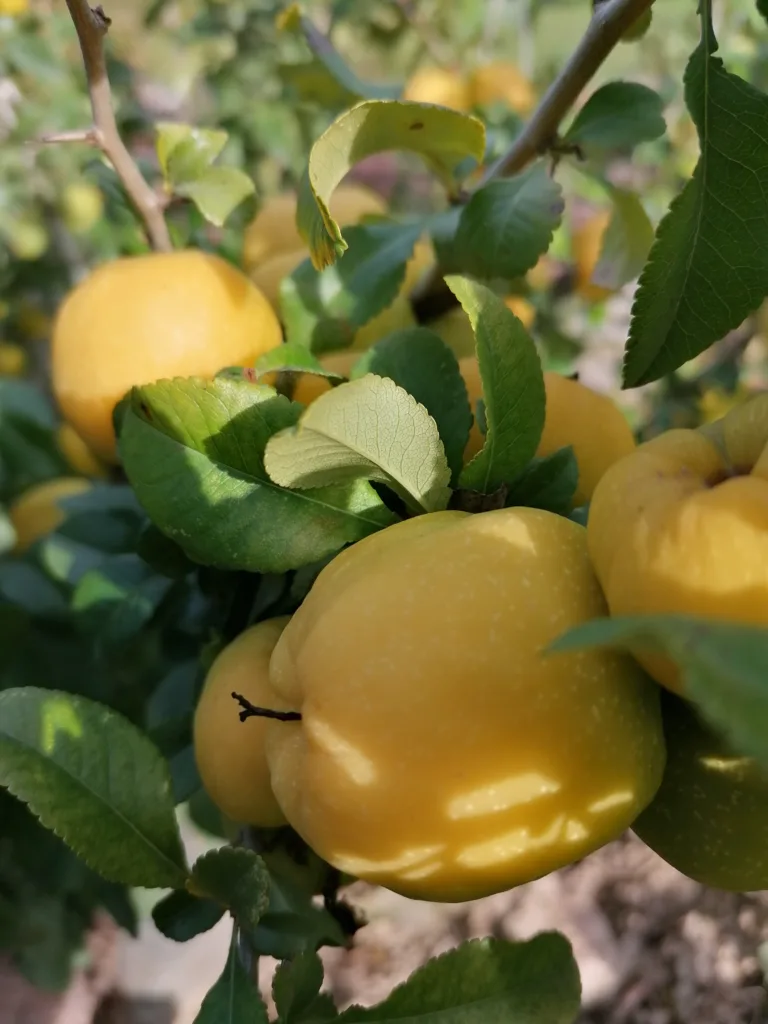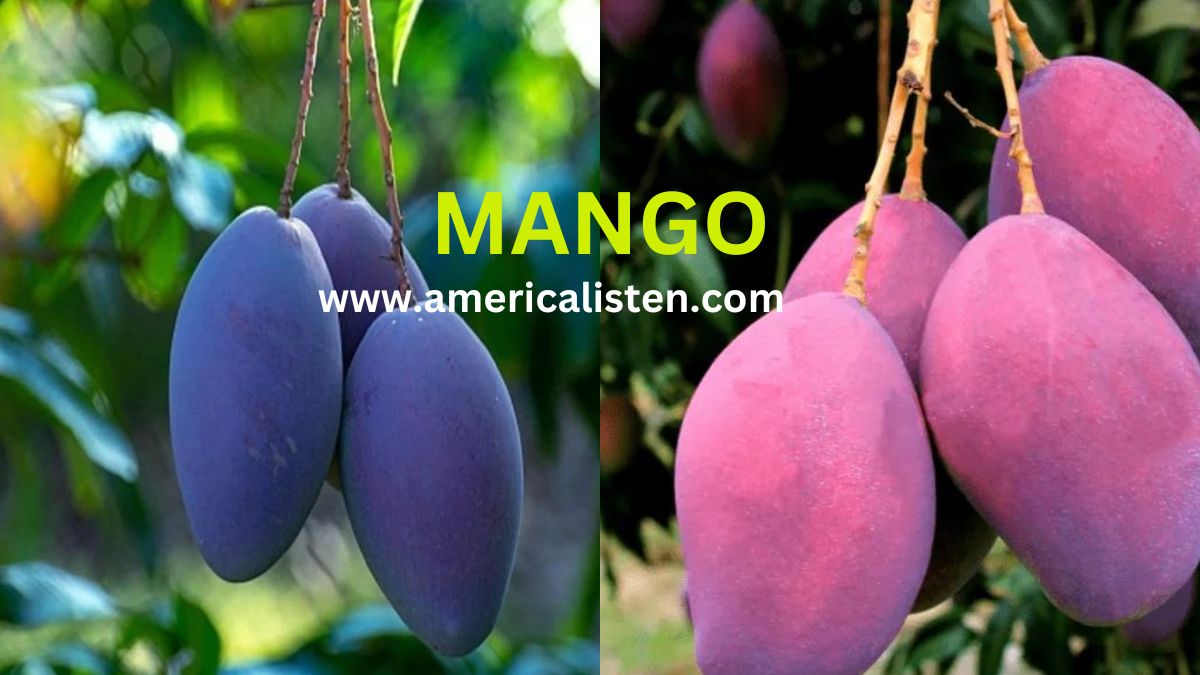Nestled in the world of fruits, the quince stands as a testament to nature’s ability to yield treasures that often go unnoticed. The quince, scientifically known as Cydonia oblonga, is an ancient fruit with a rich and storied history that spans centuries and continents. This unassuming fruit, often overlooked on supermarket shelves, is a true culinary gem that, when given the chance, reveals its unique flavor, versatility, and cultural significance.
In this exploration of the quince, we will delve into its origins, its distinct characteristics, and its remarkable journey through various cuisines and cultures. From its mysterious past as a symbol of love and fertility to its transformation into delectable jams, desserts, and savory dishes, the quince has earned its place as an intriguing and cherished ingredient in the world of gastronomy.
Join us as we embark on a sensory journey through the enchanting world of quinces, where history, taste, and culinary artistry converge to celebrate this remarkable fruit. Whether you are a seasoned chef or a curious food enthusiast, the quince is sure to captivate your senses and inspire your culinary creativity.
Unveiling the Rich History of Quince: A Fruit of Antiquity and Elegance
In the realm of fruits, there exists a lesser-known gem that carries with it a history steeped in antiquity, symbolism, and culinary excellence. The quince, known scientifically as Cydonia oblonga, is a fruit with a pedigree that traces back through the annals of time, offering a fascinating journey through the ages. From its origins in ancient Mesopotamia to its enduring presence in modern kitchens, the history of quince reveals a captivating tale of cultural significance, culinary artistry, and timeless appeal.
The Birthplace of Quince: Mesopotamia
The quince’s story begins in the cradle of civilization, Mesopotamia, the region between the Tigris and Euphrates rivers, where it is believed to have been cultivated as early as 4,000 years ago. This sturdy and resilient fruit quickly gained favor among the ancient Sumerians and Babylonians for its delightful aroma and unique flavor. Mesopotamian texts make mention of quince, extolling its virtues as a symbol of love and fertility, often gifted to brides as a token of affection and good fortune.
A Fruit of Myth and Legend
Throughout history, the quince has been celebrated in mythology and literature. In Greek mythology, it is associated with Aphrodite, the goddess of love and beauty, and was often exchanged as a symbol of affection. The golden apple, which played a pivotal role in the Judgment of Paris, leading to the Trojan War, is believed by some to have been a quince. This fruit’s enchanting presence in stories and legends speaks to its timeless allure.
The Spread of Quince Across Continents
From its cradle in Mesopotamia, the quince journeyed across the ancient world, embraced by various civilizations. The Greeks appreciated its aroma and tartness, using it to make a sweet paste called “melimelon.” The Romans, who referred to it as “melimelum,” turned it into a preserve with honey, showcasing their fondness for this enigmatic fruit.
As trade routes expanded, quince found its way to different corners of the globe. The medieval Arab world was instrumental in preserving and enhancing the cultivation of quince, developing intricate recipes that included quince in both sweet and savory dishes. During the Middle Ages in Europe, quince became a staple in monastic gardens and was treasured for its medicinal properties.
Quince in the Modern Era
In modern times, quince has maintained its culinary prestige, although it has become less ubiquitous than more common fruits. It is renowned for its unique flavor, a harmonious blend of floral, citrus, and apple notes, and its high pectin content, making it ideal for jams and jellies. Quince paste, known as “membrillo” in Spanish cuisine, is a popular accompaniment to cheese, and quince jelly is a cherished addition to breakfast tables in some regions.

Despite its somewhat exotic status in contemporary kitchens, quince remains a symbol of sophistication and timeless elegance in the culinary world. Its history, rich with symbolism and cultural significance, continues to influence how we appreciate and savor this remarkable fruit today.
Conclusion
The quince, with its enduring legacy and enchanting history, invites us to explore the connections between food, culture, and time. From the heart of Mesopotamia to the tables of modern gourmets, this fruit has bridged the past and present, offering a taste of the ages and a reminder that even the most humble of fruits can carry with them a story as rich and flavorful as their own flesh. Whether used to preserve traditions or to inspire new culinary innovations, the quince’s historical journey adds depth and resonance to our gastronomic experiences.
Unlocking the Healthful Treasures: Exploring the Medical Benefits of Quince
In the world of nutrition and natural remedies, the quince, a fruit often overlooked amidst more prominent counterparts, emerges as a true treasure trove of health benefits. Scientifically known as Cydonia oblonga, the quince has been revered for centuries for its therapeutic properties and its potential to enhance well-being. This article delves into the wealth of medical benefits that quince offers, shedding light on the numerous ways it can contribute to a healthier and more vibrant life.
Nutrient-Rich Powerhouse
Quince is a nutritional powerhouse, packed with essential vitamins, minerals, and antioxidants that support overall health. Some key nutrients found in quince include:
Vitamin C: Quince is a rich source of vitamin C, a powerful antioxidant that boosts the immune system, aids in collagen production, and helps protect cells from damage.
Dietary Fiber: High in dietary fiber, quince promotes digestive health by preventing constipation, regulating bowel movements, and supporting a healthy gut microbiome.
Potassium: Quince contains potassium, which plays a vital role in regulating blood pressure, fluid balance, and heart health.
Antioxidants: Quince is loaded with antioxidants like phenolic compounds and flavonoids that combat oxidative stress, reduce inflammation, and contribute to chronic disease prevention.
Digestive Health
One of quince’s most renowned health benefits is its positive impact on digestive health. The high dietary fiber content in quince can aid in maintaining regular bowel movements, preventing constipation, and alleviating symptoms of various digestive disorders. Additionally, quince’s natural astringent properties may help soothe gastrointestinal discomfort and reduce diarrhea.
Immune Boosting
The robust vitamin C content in quince provides a significant boost to the immune system. Regular consumption of quince can help the body ward off infections, reduce the severity and duration of illnesses like the common cold, and promote overall immune resilience.
Heart Health
Quince plays a role in heart health due to its potassium content, which supports healthy blood pressure levels and helps protect against cardiovascular diseases. The fruit’s antioxidant properties also contribute to reducing the risk of heart-related issues by combating inflammation and oxidative stress.
Weight Management
Quince’s high fiber content can assist in weight management by promoting a feeling of fullness and reducing overall calorie intake. Incorporating quince into a balanced diet may help control appetite and support weight loss efforts.
Antioxidant and Anti-Inflammatory Properties
The potent antioxidants found in quince have anti-inflammatory effects that can help protect against chronic diseases and age-related health issues. These antioxidants neutralize harmful free radicals, reducing cellular damage and lowering the risk of conditions such as cancer and neurodegenerative diseases.
Skin and Hair Health
Quince’s vitamin C content plays a crucial role in collagen production, which is essential for maintaining healthy skin and hair. Including quince in your diet can contribute to radiant skin and strong, lustrous hair.
Conclusion
The quince, often overshadowed by more common fruits, reveals itself as a nutritional powerhouse with numerous medical benefits. From supporting digestive health to boosting the immune system and aiding heart health, quince offers a wide array of advantages for those who incorporate it into their diets. As we explore the potential of natural remedies and whole foods, the quince’s rich array of nutrients and healing properties deserves its place in the spotlight as a valuable addition to a health-conscious lifestyle.
Quince: A Fruit of Many Uses
The quince, scientifically known as Cydonia oblonga, is a fruit that has captivated human civilizations for centuries. Revered for its distinct flavor and versatile nature, quince has found its way into numerous culinary, medicinal, and even cosmetic applications across various cultures. This article explores the manifold uses of quince, shedding light on its diverse roles in our lives.
Culinary Delights
Jam and Preserves: Quince is celebrated for its high pectin content, making it ideal for making jams, jellies, and preserves. Quince jam, often referred to as “membrillo” in Spanish cuisine, is a beloved accompaniment to cheese, especially Manchego.
Desserts: Quince’s unique flavor profile, a delightful combination of floral, citrus, and apple notes, shines in desserts. It can be used in pies, tarts, crumbles, and cobblers, lending a delightful aroma and a subtle tartness.

Beverages: Quince can be used to infuse flavor into beverages, both alcoholic and non-alcoholic. It adds a fragrant touch to cocktails, punches, and teas.
Sauces: Quince sauce, often sweetened and spiced, pairs well with roasted meats, particularly pork and lamb, enhancing their flavors.
Baking: Quince can be sliced and baked into cakes or incorporated into muffins and bread for a unique twist on familiar recipes.
Medicinal Properties
Digestive Health: Quince’s high dietary fiber content supports digestive health by aiding regular bowel movements and preventing constipation.
Immune System Support: The vitamin C content in quince helps bolster the immune system, reducing the risk and severity of infections.
Anti-Inflammatory Effects: Quince’s antioxidants and anti-inflammatory properties can help combat oxidative stress and inflammation in the body, potentially reducing the risk of chronic diseases.
Sore Throat Remedy: Quince has been traditionally used as a natural remedy for soothing sore throats and coughs. Infusions made from quince can offer relief from these discomforts.
Cosmetic Applications
Fragrance: Quince’s aromatic scent has led to its inclusion in perfumes and fragrances. Its fresh, fruity notes add a unique and appealing element to these products.
Skin Care: Quince extracts are used in some skincare products for their potential to hydrate and rejuvenate the skin. They can be found in creams, lotions, and masks.
Hair Care: Quince extracts may also be included in haircare products due to their potential to strengthen hair and add shine.
Decorative Purposes
Floral Arrangements: Quince branches with their beautiful, delicate blossoms are used in floral arrangements and centerpieces. Their elegant appearance adds a touch of grace to any setting.
Conclusion
The quince, with its unique flavor, nutritional benefits, and versatile applications, stands as a testament to nature’s gifts. From delectable culinary creations to medicinal remedies and even contributions to the world of cosmetics and aesthetics, quince has carved out a special place in human culture. As we continue to explore the uses of this remarkable fruit, we uncover the myriad ways it enhances our lives, from the kitchen to the medicine cabinet and beyond.
Navigating Quince Consumption: Exploring Potential Side Effects
Quince, scientifically known as Cydonia oblonga, is a fruit celebrated for its unique flavor and versatility in culinary and medicinal applications. However, like many natural foods, quince is not without its potential side effects and considerations. In this article, we will delve into the less-discussed aspect of quince consumption, shedding light on possible side effects and precautions associated with this fruit.
Gastrointestinal Distress
Digestive Issues: Quince is notably high in dietary fiber, which, while beneficial for most people, can lead to digestive discomfort in some. Excessive consumption of fiber-rich foods like quince may result in bloating, gas, diarrhea, or stomach cramps. It is essential to moderate intake, especially if you have a sensitive digestive system.
Allergic Reactions
Oral Allergy Syndrome: Quince belongs to the same botanical family as apples and pears. Some individuals with pollen allergies may experience oral allergy syndrome when consuming quince. Symptoms may include itching or tingling sensations in the mouth, throat, or lips. In rare cases, this can escalate to more severe allergic reactions.
Oxalate Content
Kidney Stones: Quince, like several fruits and vegetables, contains oxalates. Excessive oxalate intake can contribute to the formation of kidney stones in susceptible individuals. If you have a history of kidney stones or are at risk, it is advisable to moderate your consumption of quince and other high-oxalate foods.
Sensitivity to Tannins
Oral Sensation: Quince is known for its high tannin content, which can result in astringency and a dry, puckering sensation in the mouth. Some individuals may find this sensation uncomfortable or unpleasant.
Unripe Quince
Tannin Concentration: Unripe quince tends to have a significantly higher tannin content than ripe fruit. Consuming unripe quince can lead to a more intense astringent taste and may cause stomach discomfort in some people. It is recommended to cook or ripen quince before consuming it to reduce tannin levels.
Interaction with Medications
Blood-Thinning Medications: Quince, like some other fruits, contains vitamin K, which plays a role in blood clotting. If you are taking blood-thinning medications, it is advisable to maintain consistent vitamin K intake and consult your healthcare provider before making significant dietary changes, including the addition of quince.
Conclusion
While quince offers a range of potential health benefits and culinary delights, it is crucial to be aware of potential side effects and consider individual sensitivities and dietary requirements. Moderation is key, especially for individuals with specific health conditions or allergies. If you are uncertain about how quince may affect you, consulting with a healthcare provider or allergist can provide valuable insights and guidance. With careful consideration, quince can be enjoyed as a delightful and healthful addition to your diet while minimizing the risk of adverse effects.
To know More about ”QUINCE” please click HERE
You May like :


